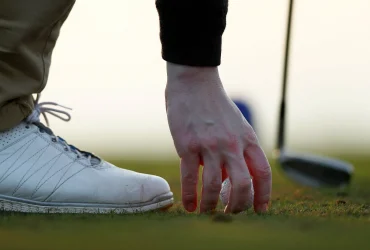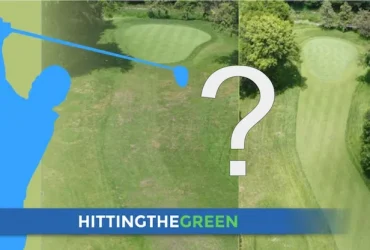Why Are Graphite Irons Longer?

We all know that graphite shafts are lighter and a bit easier to hit further. Most people don’t realize that graphite shafts are also a greater length than a steel shaft.
There are lots of details to club fitting that the average golfer is very likely unaware of.
However, If you are a shorter golfer and you purchase graphite shafts, this is an essential factor to be aware of. In this guide, we will help to explain why graphite irons are longer and what you can and should do about it if you are a shorter player.
Contents
Why Are Graphite Irons Longer Than Steel Irons?
Graphite irons are much lighter than steel irons. Because of this, they will have a lower swing weight. When manufacturers build golf clubs, they create them to be the same weight, whether you are hitting the graphite shafted irons or the steel shafted irons.
The uniformity in the swing weight will help to make sure that the clubs perform as they should with the proper club head in place.
Since the clubhead is not going to change from one set of steel irons to a set of graphite irons, there need to be slight alterations that have to take place. A manufacturer needs systems in place so that the quality and specifications of the clubs they are creating are uniform.
To make the graphite and the steel uniform, the graphite shafts need to be a little longer to accommodate for this.
What Is The Difference In Length Between Graphite And Steel Irons?
The difference in the length between graphite and steel is going to vary based on the manufacturer and the club. Most of the time, the difference will be about ¼ inch to ½ inch in length.
Although for most people, this amount of length will not make too much of a difference, for some, it could make a big difference and cause some issues with your game.
Is There A Difference Between Graphite and Steel Woods?
The difference between the length of graphite and a steel wood is usually anywhere from ½ inch to an inch. The reason that you don’t see very much information on this is that most of the time, woods are not offered in steel.
Steel woods are rare because they are hard to swing with the same amount of clubhead speed as you can swing a graphite club. People want maximum distance out of their woods, and switching to steel is not going to help the case.
Height and Golf Club Length
If you recently switched from swinging steel clubs to graphite clubs, you may have felt this difference in length. For most golfers, the difference is small enough that it will not affect your golf game; however, some players need clubs fit exactly for their height. Many people wonder what height range a standard golf club is built for.
If you are between 5’7” and 6’1,” the standard golf club should be perfect for you. As you can see, this is a pretty wide range, and that is why the ¼ inch to the ½ inch on the graphite compared to the steel will not make that much of a difference.
Let’s suppose you are 5’7,” and you have always played standard steel shafts. When you make the switch to a graphite shaft, if you then add ½ inch to the club in your hand, it may be too long. Golfers that should play with a club ½ inch longer than standard are between 6’2 and 6’4”. Certainly, this is quite a bit taller than a player who is 5’7”.
Our best advice would be for a shorter golfer to go and get fitted for irons. If you are having a custom set built to your length, then they will come at the exact length you need. It is only when you compare a stock steel shaft to a stock graphite shaft that you will see this difference in the length of the clubs.
Swing Weight Explained
As we mentioned, the entire difference in the length of the graphite vs. steel has everything to do with swing weight. If you are not sure what swing weight is, you are not alone.
Swing weight is a measurement that will describe how heavy a golf club feels. It is different than the overall weight of a golf club that would be measured in grams. The swing weight of a club is measured on a scale that starts at A0, which is the lightest and goes to G10, which is the heaviest.
You have probably seen that most clubs are going to fall in the C and D range on the swing weight scale. Each time a club is changed by two grams, it will move one point on the swing weight scale. Since the swing weight of a club goes beyond its total weight, there are several factors involved.
Things like the clubhead weight, shaft length, grip, and the balance point of the club will all affect the total swing weight of a golf club. Sometimes just changing the grips on your club could change the swing weight. These are all things to pay attention to anytime you tinker with your golf clubs.
What Happens When Golf Clubs Are Too Long?
If you are starting to suspect that your clubs maybe, in fact, too long for you, there are a few signs that should help you determine this conclusion.
- Your stance may be too upright, and you will lose the proper spine angle at address
- Shots could end up being hit thin and to the right
- You may see golf shots being pulled to the left
- On the backswing you are going to have trouble taking the club back on a plane it will end up going more outside because the length is blocking you from being on track
- You could end up with a loss of balance because the club is too long and you may notice less stability overall in your golf game
Happy Golfing!




